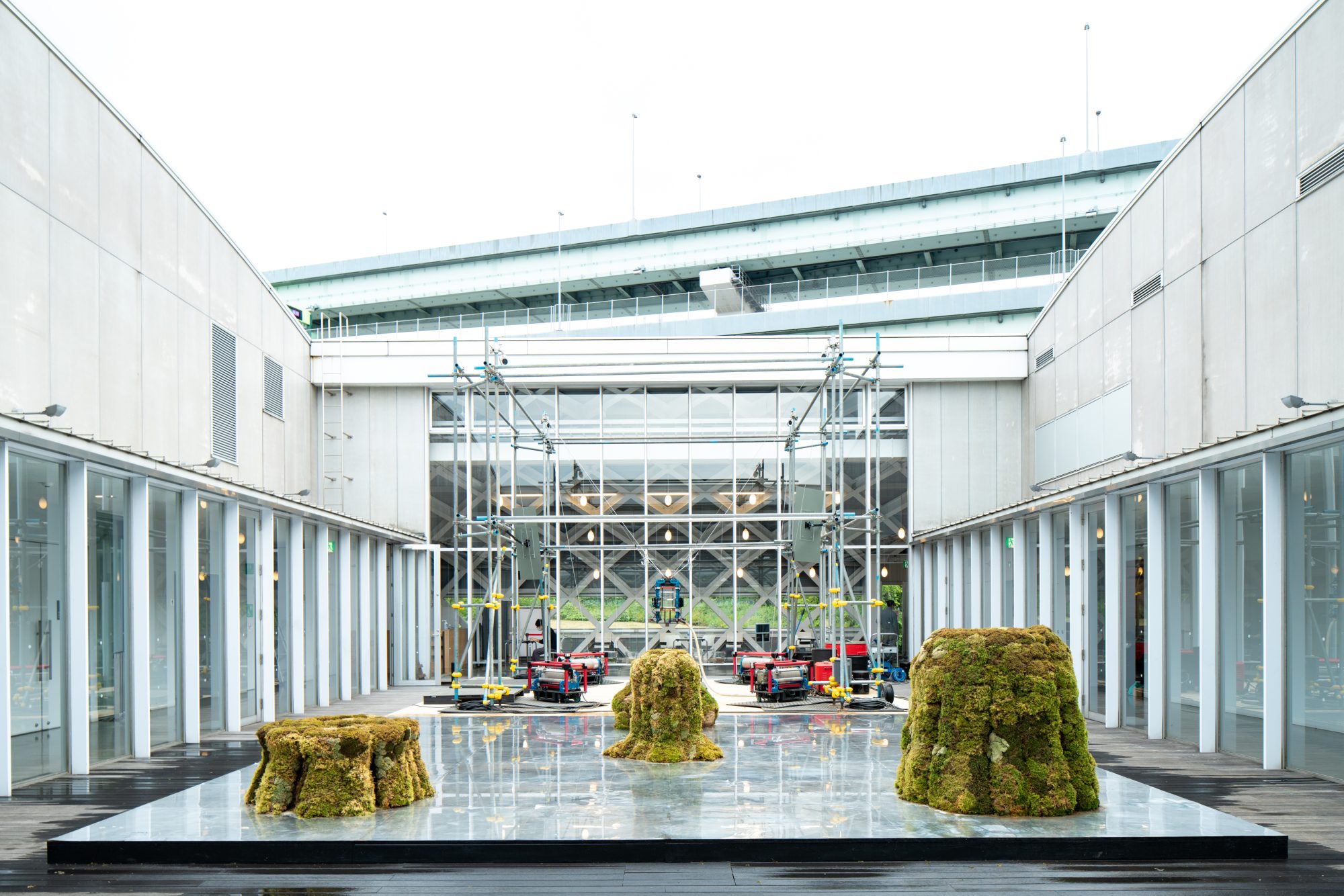25th Art Division Social Impact Award
Bio Sculpture
Media installation
Keio SFC Hiroya Tanaka Lab. + METACITY (AOKI Ryuta, Representative)[Japan]
Outline
In this exploratory project, the creators built a “Social Sculpture of the Anthropocene,” an earthen form representing the relationship between humans and nature, by integrating nature with the technologies and social systems humans have developed. Natural materials such as soil and rice husks were mixed to form an output material for the large-scale 3D printer, which printed a structure that now houses the “environmental materials.” Bio Sculpture is built with red clay, black clay, akadama soil and rice husks. Its multi-hold shape is designed using an algorithm based on the growth of coral reefs to maximize the surface area. It creates a microenvironment conditioned by interlacing shade and sunlight. Nine types of moss were planted on the surface while the internal compound autonomously controls the temperature, humidity, carbon dioxide, pollutants in the air, etc. Through long-term sensing of various elements such as changes in the microbial environment, the creators aim to clarify what it means to introduce an environment that does not exist in nature using digital technologies. As the latent form of the ecosystem becomes more apparent over time, this sculpture matures in the truest sense.
Reason for Award
Today, various fields of study, including the Anthropocene and multispecies ethnography, are rethinking the ecosystem. The positioning of new technology in the ecosystem is a critical issue to be discussed. Using a giant 3D printer and natural materials, the creators formed an ecological environment that promotes the growth of moss and microorganisms. This work is not meant to be mobilized to address pressing issues such as coral reef restoration projects. Rather, it is designed to be placed in an open space in an urban area so that viewers can observe this artificial form macroscopically and how it becomes a part of the surrounding environment. Also giving attention to its microscopic structure, the design includes sensing technology that has enabled monitoring microbiota, various ecological parameters, and even soil composition change over time. This work, generated with practical and comprehensive knowledge, has made a significant contribution to the development of new media art and therefore deserves the Social Impact Award. (IWASAKI Hideo)



